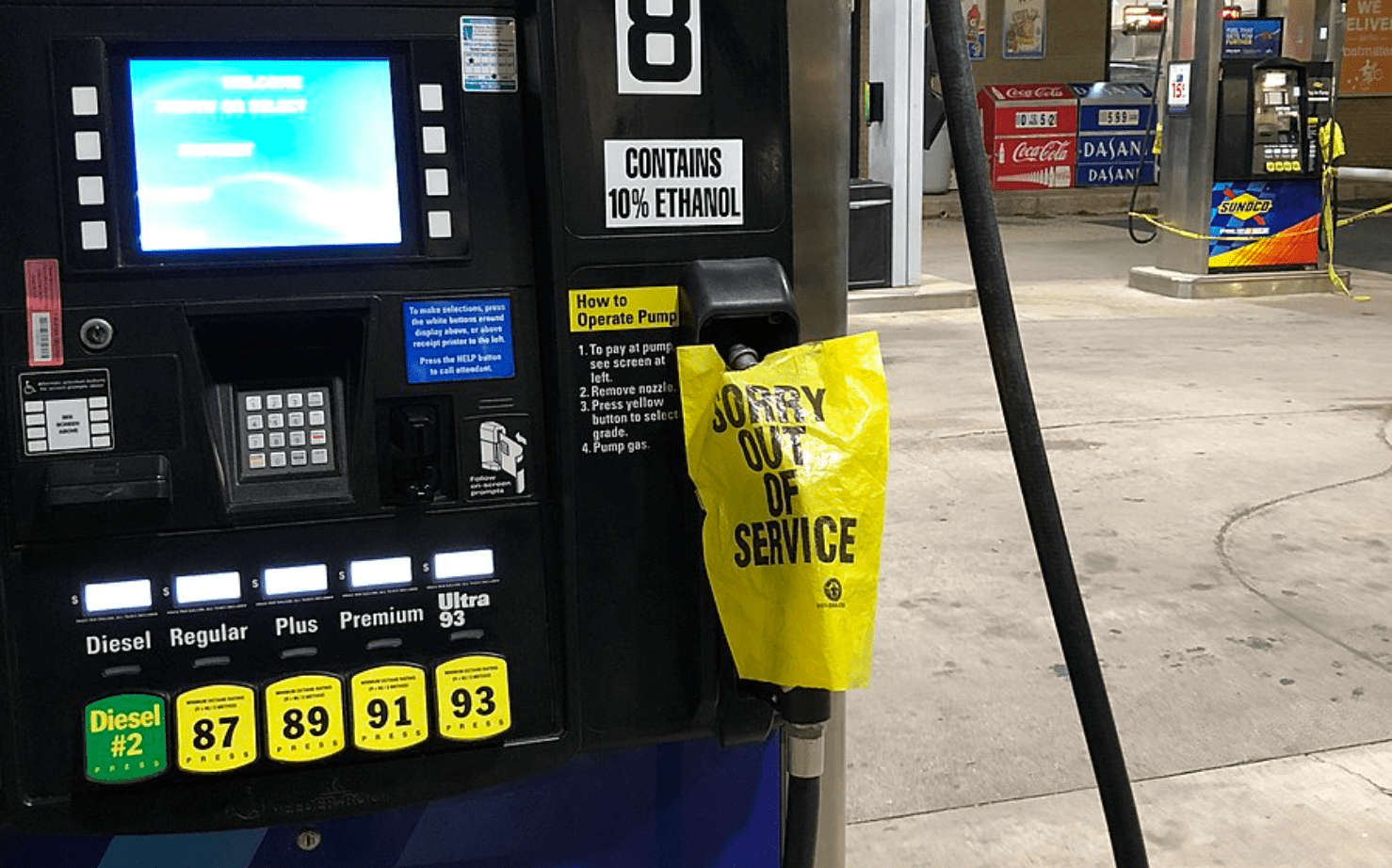As gas prices soar, American motorists say they're making plans to drive less — but car-dependent American cities aren't prepared for the impacts of a sudden decrease in driving, despite the all-too-recent lessons of the pandemic.
In a new AAA survey released on Thursday, a staggering 59 percent of motorists said they would "make changes to their driving habits or lifestyle if the cost of gas rose to $4 per gallon" — a benchmark that has already been smashed in the wake of Russia's attack on Ukraine. A further 80 percent of respondents said they'd drive less if fuel costs reached an average of $5 per gallon in their area, which it already has in California, and which experts expect will happen nationwide soon.
The specific strategies drivers said they'd use to avoid gassing up, though, varied significantly depending on their age. Older motorists were more likely to say they'd skip driving trips altogether — 59 percent of people over 35 said they'd cut back on shopping or dining out, vs. 43 percent of 18-34 year olds — while younger drivers were about three times more likely to say they'd still go out, but switch to carpooling (29 percent versus 11 percent.)
The researchers did not ask whether drivers might choose non-gas-powered modes in response to climbing oil prices, which is perhaps not surprising given what the acronym AAA stands for: the American Automobile Association. But earlier research about past gas price shocks have shown that some do — at least when they live in cities where they can.
When gas climbs over $4 per gallon, for instance, one study found that light rail ridership shoots up 9.34 percent on average for every 10-percent rise at the pump. Bus ridership gains a modest 1.67 percent for every 10 percent fuel cost increase, too, though the threshold for the biggest gains is lower, and the ridership gains really start piling up when prices climb over $3.
There's less evidence about the impact of gas prices on biking, walking and other active modes, but 95 percent of new bike buyers during the 2008 gas crisis told researchers that they'd pursued their purchase to offset their fuel costs. Some bike shop owners are already reporting rapidly increasing demand right now, particularly for car-replacing e-bikes.
Increased demand for green transportation, though, doesn't mean that cities are actually supplying the conditions that make sustainable modes safe, convenient, and attractive for everyone — especially considering how dangerous autocentric roads can become when congestion suddenly thins.
Local leaders don't have to think back very far to remember this. During the first year of the Covid-19 pandemic, a historic national nosedive in vehicle miles travelled ushered in an equally historic 24-percent surge in the crash death rate between 2019 and 2020, as the handful of disproportionately reckless drivers who stayed on the roads hit the gas on all that newly empty asphalt. (The fact that the owners of the biggest, most dangerous cars on the road actually drove more during quarantine than the year before didn't help either.) That surge didn't really subside as VMT resumed normal levels in 2021, which experts theorize has to do with changes in commute patterns caused by the rise of remote work that spread dangerous traffic throughout the day, eliminating rush-hour congestion that would normally slow drivers down.
Through the first two years of the pandemic, sustainable transportation advocates say American cities didn't do enough to address those dangerous conditions, like deploying rapid strategies to calm speed-encouraging streets, increasing and improving transit service, or even just temporarily opening streets to other modes by highly restricting car traffic at designated times.
As gas prices climb, leaders can make a different choice now — and they can do it with new, hard-won knowledge of how to do it equitably. When that happens, they may find a surprising number of former full-time motorists who are all too ready to ditch the pump and get on board.






